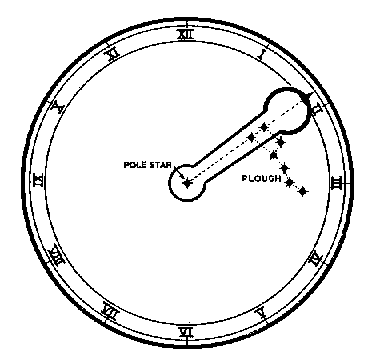
by John P. Pratt
©1998 by John P. Pratt. All rights Reserved.
So what ever happened to sundials? We used to have sundials on buildings and in parks. Where is a sundial anywhere in the city now? I think they're gone because of daylight savings time! Someone would have to changed the numbers on a sundial twice a year. So all we need is a sundial with a moveable wheel to fix that.
But it is useful to know how to tell time by the sun anyway. For me, one very practical use is to know when I won't get sunburned. The most harmful time for sunburn is within about three hours of when the sun is highest (due south in the northern hemisphere). So just when is the sun highest?
We speak of "high noon" when the sun is supposed to be highest, but it doesn't work that way in real life for two reasons. First, in the summer, we add an hour for daylight savings. Secondly, here near Salt Lake City, we are about half an hour west of the center of our time zone (which is close to Denver) so we have to add another half hour because we set our clocks by Mountain Standard Time, not Salt Lake Local Time. That means that here, the sun is due South at 1:30 p.m. in the summer. If you are local here, memorize that! If not, find out your time correction and remember it. Then if you are on a summer hike, and it is 1:30 p.m., you will know the shadows will point due North.
You can use the pointers of the Big Dipper as a star clock to tell the time. If you lived in the middle ages, you might have carried a little wheel called a "nocturnal" to do this. Because you are able to do simple math in your head, you don't even need the little wheel, but you need to practice doing it about once a month so you don't forget how. Just follow these five easy steps to read the time to within half an hour.

If you just practice this a few times, you'll remember it and you'll be surprised just how accurately you can tell time by the stars and amaze your friends at summer campouts.